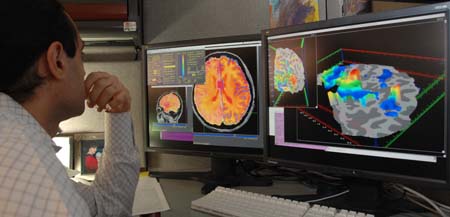 Yesterday I visited the International Conference on Neuromarketing, My Message inside your brain. This was the third time this conference was held. The goal was to provide the latest insights from the field and academic research.
Yesterday I visited the International Conference on Neuromarketing, My Message inside your brain. This was the third time this conference was held. The goal was to provide the latest insights from the field and academic research.
Techniques
During the conference three techniques were covered: fMRI, EEG, facial coding and IAT. There are a number of differences in these techniques, the foremost is cost. fMRI is the “holy grail” but also the most costly where as IAT is the most cheap. All these thechniques try to uncover our brain activity and thereby our emotions of the automated brain, but all based on a different assumption. fMRI tracks bloodflow in the brain, EEG tracks electrical activity in the brain, facial coding identifies micro emotions in our face and IAT tries to reveal our implicit assumptions.
Why do we need these techniques
People make only a small amount of rational decisions, the estimates are around 5% or the difference between a cubic meter and the milky way. There seems to be no correlation between what people say they will buy or do (a conscious decision) and what they actually buy or do (a unconscious decision). This means a questionnaire with you clients if they want to but your product is useless because that does not give you insight in the actual behavior. A conscious buying decision only occurs when the choice is simple, that means a small number of choices and very clear differences between the choices. In our world today these choices are practically extinct. During the conference we got a number of studies that could predict actual succes (the bigest blockbuster movies in the US or an Effie) based on a 30 person trial with either fMRI or EEG. This means the researchers can link specific brain activity during a commercial to the actual succes of a product. If my brain reacts in a specific way to an add, the chances are a lot bigger that I will buy this product.
Speakers
The speaker that stood out most was Margriet Sistkoorn. Her presentation on emotions and the brain worked around Threat, Reward and Wisdom as the three basics of the brain and played a number of tricks on our brains to make us humble about our own ability to control our brain.
There were speakers from three cognitive neuro labs in the Netherlands: University of Amsterdam (Victor Lamme & Andries van der Leij), Erasmus University (Willem Verbeke & Ale Smids) and Tilburg University (Margriet Sitskoorn). And speakers of four commercial neuromarketing agencies: Neuro Intelligence Group (Roland Dietvorst), Neurensics (Walter Limpens), IPM (Aartie Rambaran Mishre) and NeuroLeadershipInstitute (David Rock).
Neuro Information Sciences
What is there to learn for information management from neuro sciences. Well a lot! We at Incentro believe that the last step in making information more productive is that information should be interpretable. Neuroscience can help us figure out what types of information, channels or contexts work best to help the unconscious brain make decisions or store information for later use.
PS thanks wikipedia for the image
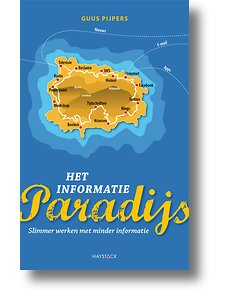 De afgelopen periode heb ik het boek het informatie paradijs van Guus Pijpers gelezen. Dit boek geeft op een hele pragmatsiche wijze handvatten om de weg naar het informatie paradijs te vinden en wanneer je het paradijs gevonden hebt hoe je in het paradijs jouw weg kan vinden.
De afgelopen periode heb ik het boek het informatie paradijs van Guus Pijpers gelezen. Dit boek geeft op een hele pragmatsiche wijze handvatten om de weg naar het informatie paradijs te vinden en wanneer je het paradijs gevonden hebt hoe je in het paradijs jouw weg kan vinden.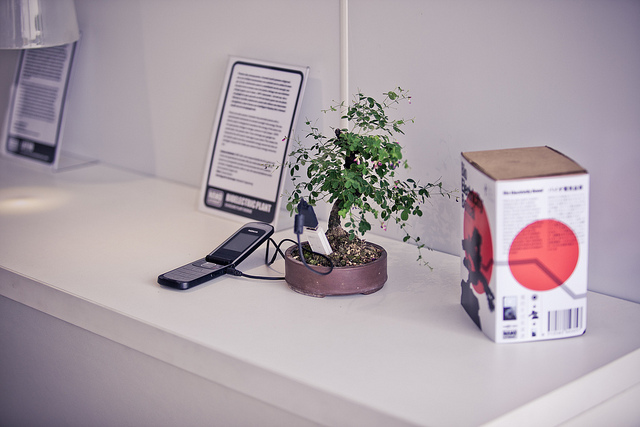 Yesterday was the third and final day of PICNIC. The picture (courtesy of PICNIC) was taken in the NANO supermarket and is a bonzai tree powering a cellphone. In this supermarket artists gave impression what could be done with nano technology. This wonderfull day started with the
Yesterday was the third and final day of PICNIC. The picture (courtesy of PICNIC) was taken in the NANO supermarket and is a bonzai tree powering a cellphone. In this supermarket artists gave impression what could be done with nano technology. This wonderfull day started with the 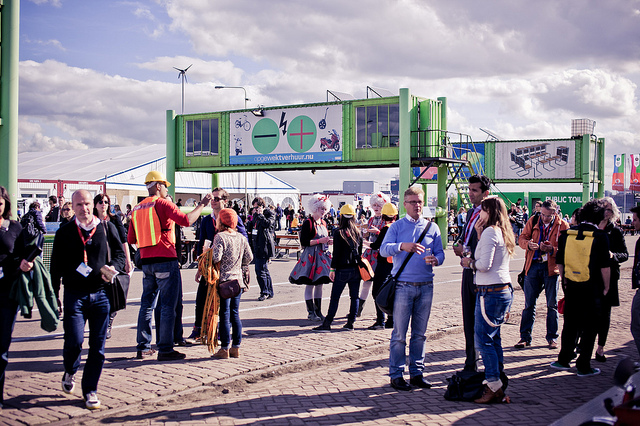 Today was day two of PICNIC and another great day, maybe not as great as yesterday but never mind! The weather had improved tremendously over night. The day started with the
Today was day two of PICNIC and another great day, maybe not as great as yesterday but never mind! The weather had improved tremendously over night. The day started with the 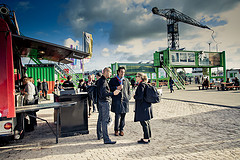 My first ever PICNIC festival day started with a nice talk by professor
My first ever PICNIC festival day started with a nice talk by professor